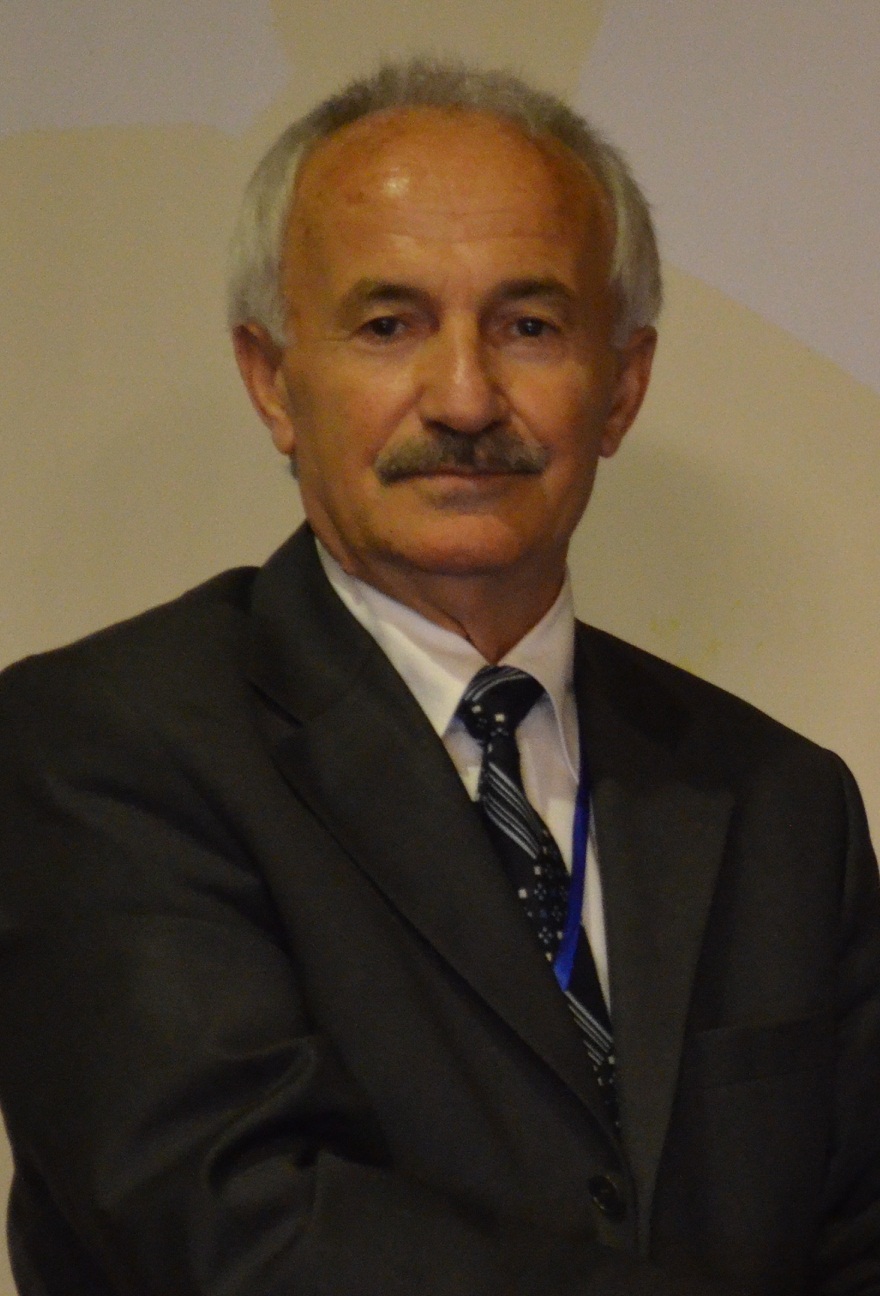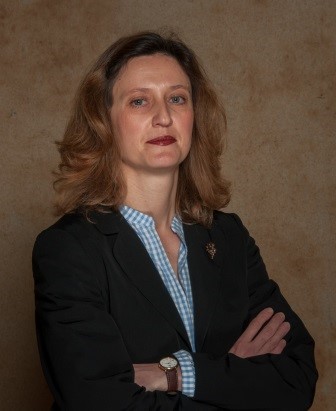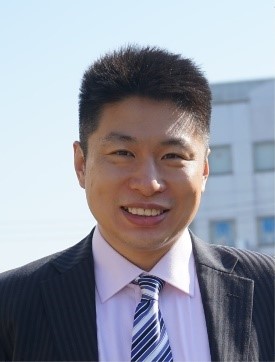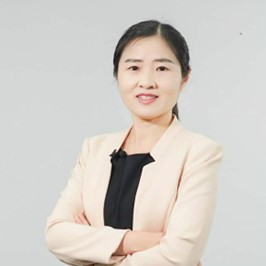Invited Speakers
Dr. Osman Adiguzel
Professor, Department of Physics,Firat University, Turkey
Speech Title: Phase Transformations and Crystallographic Analysis of Shape Reversibility in Shape Memory Alloys
Abstract: Some materials take place in class of advanced smart materials, by exhibiting a peculiar property called shape memory effect. These alloys have dual characteristics called thermoelasticity and superelasticity, from viewpoint of memory behavior. Shape memory effect is initiated on cooling and deformation processes and performed thermally on heating and cooling, with which shape of materials cycles between original and deformed shapes in reversible way. Therefore, this behavior can be called thermal memory or thermoelasticity. Superelasticity is performed with stressing and releasing the material in elasticity limit at a constant temperature in the parent phase region, and shape recovery occurs instantly upon releasing. These phenomena are result of crystallographic transformations called martensitic transformation.
Thermoelasticity is governed by the thermal and stress induced martensitic transformation. Thermal induced martensite occurs on cooling along with lattice twinning and ordered parent phase structures turn into twinned martensite structures by means of lattice invariant shears, and these structures turn into detwinned martensitic structures with deformation by means of stress induced transformation. Lattice twinning occurs in <110 > -type directions on the {110}-type plane of austenite matrix in self-accommodating manner. Superelasticity is also governed by stress induced martensitic transformation and ordered parent phase structures turn into detwinned martensite structures with stressing.
Copper based alloys exhibit this property in metastable β-phase region, which has bcc-based structures. Lattice invariant shear and twinning is not uniform in these alloys and gives rise to the formation of complex layered structures, depending on the stacking sequences on the close-packed planes of the ordered parent phase lattice. The layered structures can be described by different unit cells as 3R, 9R or 18R depending on the stacking sequences on the close-packed planes of the ordered lattice. The unit cell and periodicity are completed through 18 layers in direction z, in case of 18R martensite, and unit cells are not periodic in short range in direction z.
In the present contribution, x-ray diffraction and transmission electron microscopy (TEM) studies were carried out on copper based CuAlMn and CuZnAl alloys. X-ray diffraction profiles and electron diffraction patterns exhibit super lattice reflections. X-ray diffractograms taken in a long-time interval show that diffraction angles and intensities of diffraction peaks change with the aging duration at room temperature. This result refers to the rearrangement of atoms in diffusive manner.
Keywords: Shape memory effect, martensitic transformation, thermoelasticity, superelasticity, lattice twinning, detwinning.
Dr. Marina Ćetković
Associate Professor, Department for Engineering Mechanics and Theory of StructuresFaculty of Civil Engineering, University of Belgrade, Serbia
Speech Title: Thermo-Mechanical Stability of FRP and FGM Plates with Geometrical Imperfections Using Layer Wise Finite Element
Abstract: One of the ultimate limit state important for the safe design of structures is failure due to buckling. The origin of buckling, as the sudden change in shape of structural component, may arise from mechanical as well from thermal loading conditions. Apart from the loading conditions, the geometrical imperfections are another parameter important for the overall structural stability. In wish to fulfil the lack of thermo-mechanical stability solutions based on Layer Wise (LW) plate theories, which will be able to include general form of geometrical imperfection, this study presents the LW finite element for thermo-mechanical stability of geometrically imperfect FRP (Fibre reinforced polymer) and FGM (Functionally Graded Material) plates. The mathematical model, based on Layer wise theory of Reddy, assumes layer wise variation of in plane displacements and constant transverse displacement through the thickness, linear strain displacement relations and isotropic/orthotropic material properties. The material properties of FGM plates are assumed to be constant in xy-plane and vary through the thickness by a power law function in terms of the volume fraction of the constituents. The Koiter’s model for initial geometric imperfection is adopted. The principle of virtual displacement (PVD) is utilized to derive Euler-Lagrange differential equation of linearized buckling problem. The weak form is discretized using nine node Lagrangian isoparametric finite element. The original MATLAB computer program is coded for the finite element solution and used to study influence of plate thickness a/h, aspect ratio a/b, power low index, imperfection form and material properties on thermo-mechanical stability of FRP and FGM plates. The results are compared with the one from the literature.
Acknowledgements: The author is thankful for the financial support received by the Ministry for Education, Science and Technology, Republic of Serbia, grant number 200092.
Dr. Andrea Dzubinska
CPM-TIP, UPJS, Tr. SNP 1, 040 11 Kosice, SlovakiaSpeech Title: Experimental Study of Emergent Ground State Behaviour in Yb-based Compounds
Abstract: The study of intermetallic compounds has a long history. These alloys and compounds consist of billions of microscopic elementary particles: electrons, neutrons, protons, quantized lattice vibrations known as phonons, and many others. The physical properties of macroscopic intermetallic compounds cannot be explained completely only by simple extrapolation of the behaviour of mentioned individual elementary particles, even on the basis of statistical physics. Interesting and new properties emerge from a quantum arrangement of particles. This is what attracts scientists to explore condensed matter physics, which is the most active field related to strongly correlated electron systems. In the early years of the 20th century, the study of physical properties in the low-temperature range started to develop. It is related to the emergent behaviour of matter due to the laws of quantum mechanics. When the temperature approaches zero kelvin, the highly correlated state of the electron system arises. This is usually caused by the enhanced electronic density of electron levels close to the Fermi energy in metals, especially in sharp 4f electronic states in rare earth elements. The emerging field of study is arising due to undergoing quantum phase transitions. A fascinating variety of temperature values and magnetic field properties can be observed in the vicinity of the quantum phase transition. Therefore, new physics has appeared. This is one of the reasons why we decided to study such a system in condensed matter physics. The mentioned phenomena, which can arise at the level of quantum mechanics effects, led our group to study the selected intermetallic systems. These materials belong to a group of advanced materials and potential magnetic actuators. Polycrystalline samples based on Yb were prepared, and their interesting physical properties were studied. All of them were prepared by the same method – the inductive melting process. In all studied samples, attractive physical properties could be found by using different scientific methods. Moreover, rare earth materials may become a possible basis for future applications.
Keywords: Physical Properties, Magnetism, Rare-earth.
Acknowledgements: This research work was supported partially by VEGA 1/0705/20, VEGA 1/0404/21 and VEGA 1/0180/23.
Dr. Jiangwei Liu
Principal Researcher, Research Center for Electronic and Optical MaterialsNational Institute for Materials Science, Japan
Speech Title: Diamond Logic Circuits Consisting of Depletion-Mode and Enhancement-Mode MOSFETs
Abstract: During recent several years, hydrogenated-diamond (H-diamond) based metal-oxide-semiconductor field-effect transistors (MOSFETs) have been developed greatly. The MOSFETs with structures of SD-Ta2O5/ALD-Al2O3/H-diamond and SD-ZrO2/ALD-Al2O3/H-diamond (where SD and ALD refer to atomic layer deposition and sputtering deposition techniques for oxide insulators deposition) showed depletion-mode (D-mode) characteristics. In contrast, SD-LaAlO3/ALD-Al2O3/H-diamond and SD-HfO2/ALD-HfO2/H-diamond MOSFETs showed enhancement-mode (E-mode) characteristics. The studies revealed that the D-/E-mode characteristics of the H-diamond MOSFETs were independent of the oxide insulators and device structures, and reproducibly depended on the fabrication processes. By comparing the fabrication process difference, it was found that the oxide/H-diamond interface for the E-mode MOSFETs was annealed at 180 °C during the photoresist baking step. However, that of the D-mode MOSFETs was not annealed. Because holes accumulation in the H-diamond channel layer is thermosensitive, annealing possibly led to the disappearance of holes and the formation of E-mode characteristics. Therefore, annealing effect on the electrical properties of H-diamond-based MOSFETs and guidelines to control the D-/E-mode characteristics of H-diamond MOSFETs were investigated. After clarifying the controlling conditions for the D-/E-mode characteristics of the H-diamond MOSFETs, the logic circuits composed of D-/E-mode H-diamond MOSFETs were fabricated successfully.
In this talk, the controlling conditions for the D-/E-mode characteristics of the H-diamond MOSFETs and the fabrication of D-/E-mode H-diamond MOSFET logic circuits will be discussed.
Dr. Nikolai V. Gaponenko
Professor, Belarusian State University of Informatics and Radioelectronics, BelarusSpeech Title: Upconversion Luminescence from Sol-Gel-Derived Erbium- and Ytterbium-Doped BaTiO3 Film Structures
Abstract: In this work, we have presented data on upconversion luminescence from a sol-gel derived BaTiO3 target and film structures doped with Er and Yb (BaTiO3:(Er,Yb)). We synthesized several different types of materials and film structures which demonstrated Er3+ upconversion luminescence: (a) the target form, which used the explosive compaction method for sol-gel-derived BaTiO3:(Er,Yb) powder; (b) the single-layer spin-on BaTiO3:(Er,Yb) xerogel films deposited on fused silica, silicon and silicon coated with sol-gel derived porous SrTiO3 layer; (c) the microcavities with an undoped SiO2/BaTiO3 Bragg reflector surrounding a BaTiO3:(Er,Yb) active layer, (d) the films deposited from suspension of undoped BaTiO3 sol and BaTiO3:(Er,Yb) particles doped with erbium and ytterbium. The BaTiO3:(Er,Yb)/SiO2 microcavity exhibited an enhancement of the upconversion luminescence when compared to the BaTiO3:(Er,Yb) double-layer film fabricated directly on a crystalline silicon substrate. The optical band gap for the indirect optical transition in the single layer of the BaTiO3:(Er,Yb) spin-on film annealed at 450 °C was estimated to be 3.82 eV, while that for the film annealed at 800 °C was approximately 3.87 eV. The reflection spectra of the BaTiO3:(Er,Yb)/SiO2 microcavity demonstrated a deviation of the maxima of the reflection within 15% and a shift of the cavity mode by 10 nm for temperature measurements ranging from 20 to 130 °C, and these effects depend on the annealing temperature of the microcavity. The potential applications of the BaTiO3:(Er,Yb) sol-gel-derived structures for remote optical monitoring are discussed.
Keywords: Sol-gel, erbium, ytterbium, upconversion, luminescence
Dr. Yanli Lu
Professor, State Key Laboratory of Solidification ProcessingNorthwestern Polytechnical University, China
Speech Title: Microstructure Characterization of Nano-Al Particles and its Effect on Mechanical Properties of Aluminum Alloy
Abstract: Various orientations and diffraction patterns from nanoscale Al precipitates in eutectic Si were investigated by high-resolution transmission electron microscopy combined with transition matrix and stereographic projection. It was found that the Al precipitates had 12 variants, all orientation relationships can be expressed as: (001)Al//{111}Si, [110]Al//<110 >Si. Further, a new diffraction pattern model from Al precipitates was established under [111]Si zone axis, which was in good agreement with the experiment data. The microstructure, adhesion strength and electronic structure of the interface between Al precipitate and Si matrix were studied by first-principles calculation and experimental observation. The results show that the covalent bonds are formed between interfacial Al and Si atoms, which play a key role in interfacial bind strength. Based on the Griffith fracture theory, the cracks tend to form and expand in the interior of Al precipitates firstly, and the interfaces can act as a protective layer to prevent crack propagation. Therefore, the nanoscale Al precipitates will improve the toughness of eutectic Si particles by releasing part of stress through lattice distortion. In addition, the stretched nanoscale Al precipitates can act as effective heterogeneous nucleation sites for high density deformation nanotwins in eutectic Si during deformation, which significantly improved the deformability of eutectic Si.






